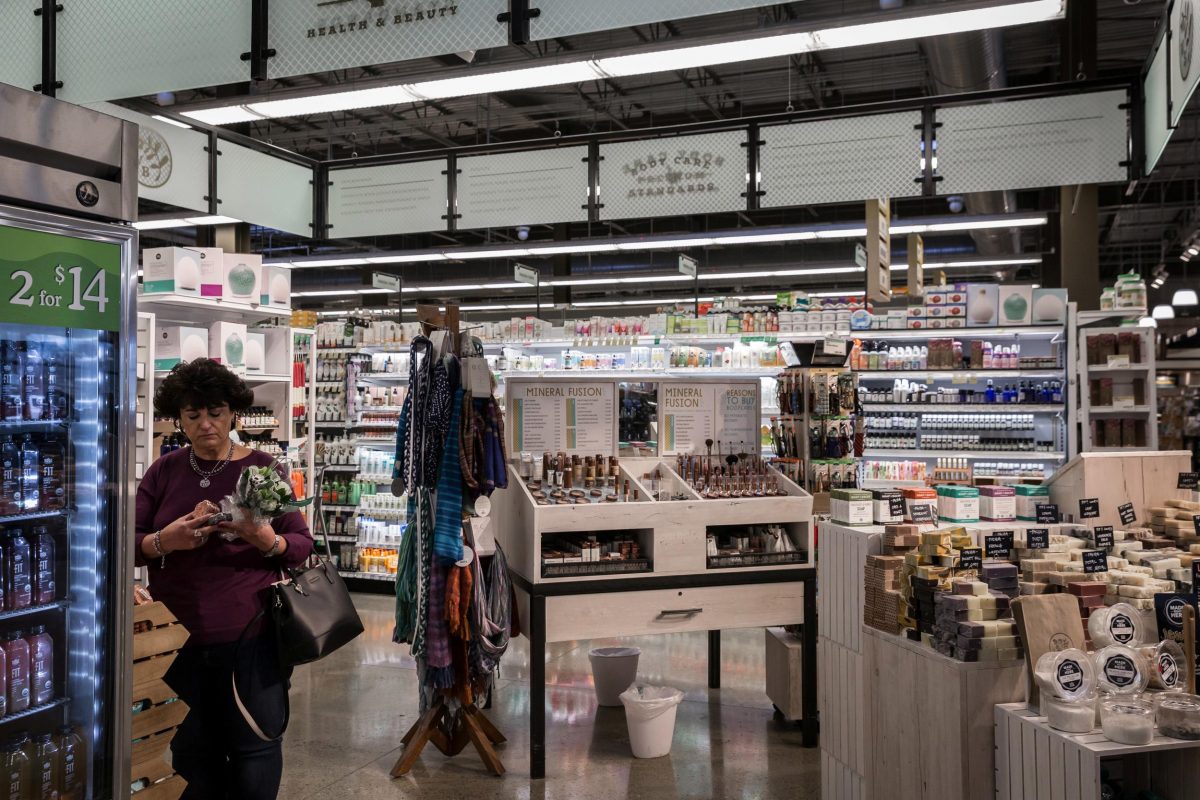Imagine you could pick up lipstick, groceries, some collagen capsules, and the fancy skincare products you use all in one spot. You can do that on the internet, sure, but right now there isn’t a store that totally fits the bill.
Amazon (surprise!) wants to provide that destination, via Whole Foods.
In an interview with the beauty publication Glossy, Amazon-owned Whole Foods Market revealed its plans to make the grocery chain a sort of clean beauty destination.
Jen Coccaro, director of merchandising for Whole Body, the chain’s beauty and wellness sector, notes that Whole Foods has been selling natural and organic beauty products since it was founded in 1980. This was well before the advent of the $4.2 trillion wellness industry and mainstreaming of beauty supplements and “clean beauty” (which generally refers to products made using only natural, organic, non-irritating, and pH-optimized ingredients).
Coccaro is responsible for educating customers about Whole Food’s beauty offerings, as well as recruiting new brands. “What we are trying to do now is be more engaged in the industry, make our customer more aware of us and that we have clean beauty products and full solutions to wellness,” she told Glossy.
Sounds simple, especially for a company that really has had a section dedicated to “wellness” products for several decades now. That said, the Whole Foods move is only the latest Amazon has made in what seems to be an aggressive strategy for the beauty market.
Amazon, which unveiled a debut collection of inexpensive makeup products under its private label “find” in January, is already a premier destination for cosmetic products and a major beauty channel. It boasts three differentiated categories on its site: luxury beauty, for prestige brands you’d find at a department store (this category ballooned 57% in the second quarter of 2018, per One Click Retail); professional beauty, with products you’d find in salons and spas, and indie beauty, which sells independently owned brands not found at retailers like Target, Sephora, or Ulta.
But the beauty industry has proved unusually resilient to competition from Amazon, thanks in large part to strong brick-and-mortar retailers like Ulta and Sephora, both of which have shown stellar growth and guidance in recent years.
Such retailers continue to thrive—and remain “Amazon proof” in a sense—because of the nature of buying makeup. It’s a tactile experience that supports in-person exploration. Whether your a layperson or a professional, the texture, scent, look, and feel of a product are critical. Buying online removes the sensory aspects of purchasing products.
Beauty tech, including virtual and augmented reality, may someday become the main way consumers try lipstick or match a foundation shade to their skin color. Shoppers are still doing that inside of the store, something that was emphasized in a recent NPD Group reportthat revealed that the beauty category is driving the majority of foot traffic into duty-free stores around the world.
Meanwhile, Amazon is hitting Sally Beauty and Ulta, in particular, from another angle: It launched the Amazon Professional Beauty Store last week, an online venue for professional products. The company has offered a selection of pro-grade products for some time. Now they’re to be provided via brand partnerships with salon-grade companies rather than third-party retailers, a fact that had previously deterred professionals who were wary of purchasing fakes. Shares of Ulta and Sally Beauty—the go-to suppliers for professionals—both fell on the news, with the latter dropping 17%.
https://qz.com/quartzy/1657197/amazon-wants-to-make-whole-foods-a-beauty-store/

